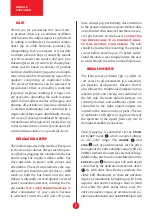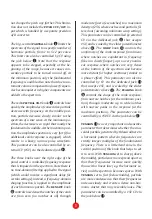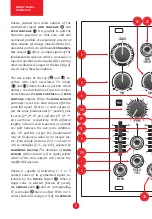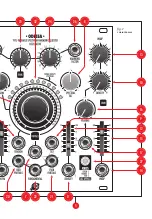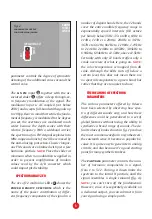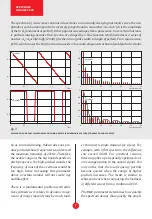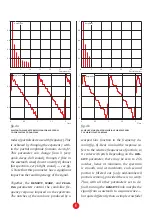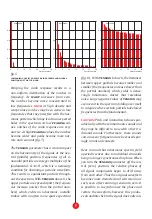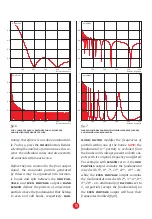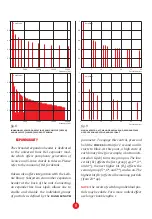
10
tinuity, therefore it is not done automatical-
ly. To do so, press the voices button. Besides
selecting the number of unison voices, this re-
syncs the individual voices and also restarts
all sinusoids within each voice.
Before they are summed in the final output
signal, the sinusoidal partials generated
by Odessa may be organized into harmon-
ic banks and split between the odd par-
tials and even partials outputs. bank
length defines the pattern of consecutive
partials above the fundamental that belong
to even and odd banks, respectively. har-
monic factor modifies the frequencies of
partials within one of the banks.
note:
the
fundamental (1
st
partial) is excluded from
the banks and is always present on both out-
puts with its original frequency unaffected.
For example, with length set to 3, the odd
partials output contains the fundamental
mixed with 5
th
, 6
th
, 7
th
, 11
th
, 12
th
, 13
th
... etc,
while the even partials output contains
the fundamental mixed with 2
nd
, 3
rd
, 4
th
, 8
th
,
9
th
, 10
th
… etc. Additionally, if factor is set to
2, all partials (except the fundamental) on
the even partials output will have their
frequencies doubled (fig.9).
0
100 200 300 400 500
Relative frequency
1
0.8
0.6
0.4
0.2
Amplitude
0
100 200 300 400 500
Relative frequency
1
0.8
0.6
0.4
0.2
Amplitude
0
100 200 300 400 500
Relative frequency
1
0.8
0.6
0.4
0.2
Amplitude
0
100 200 300 400 500
Relative frequency
1
0.8
0.6
0.4
0.2
Amplitude
fig. 7
warped comb response with minimum peaking (upper)
and maximum peaking values
fig. 6
tilt + comb frequency response for low (upper)
and high (lower) density values


